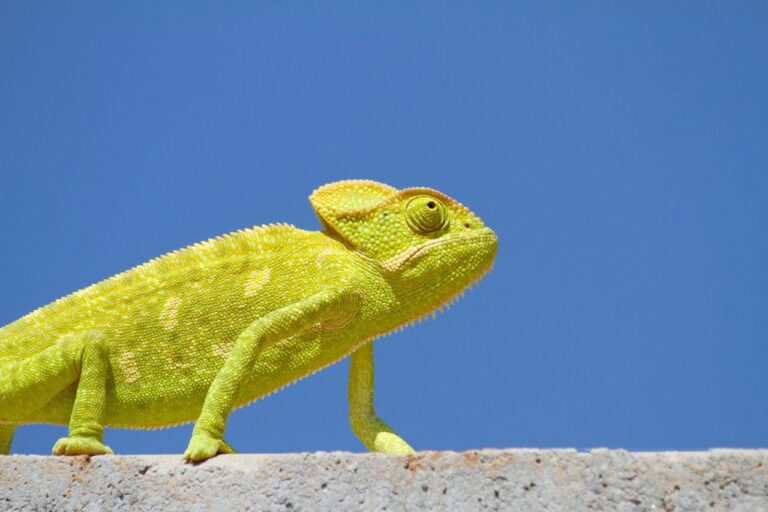There are about 160 species of chameleons, most of which are found in Madagascar, Africa, and southern Europe. They inhabit a variety of environments, including rainforests, savannas, and deserts.
Chameleons are famous for their ability to change color, but they don't do this solely for camouflage. They also change color to communicate, regulate their body temperature, and respond to their emotions.
Chameleons have zygodactylous feet, meaning their toes are arranged in two opposing groups, which helps them grip branches tightly as they climb.
One of the most distinctive features of chameleons is their eyes, which can move independently of each other. This allows them to have a full 360-degree view of their surroundings.
Chameleons have long, sticky tongues that can extend rapidly to capture prey. Their tongues can be up to twice the length of their body, and they can strike with incredible speed, catching insects in milliseconds.
The smallest chameleon species, the Brookesia micra, is only about 1 inch long, while the largest, the Parson's chameleon, can reach up to 27 inches in length.
Chameleons primarily feed on insects, but larger species may also eat small birds and other reptiles. They are ambush predators, relying on their stealth and quick tongue to catch prey.
The skin of a chameleon contains special pigment cells called chromatophores that allow them to change color. These cells expand or contract to produce different colors and patterns.
Chameleons are solitary animals and are generally territorial. They communicate with each other through body language and color changes, especially during mating season or when defending territory.
Female chameleons can lay between 5 to 100 eggs, depending on the species. Some species bury their eggs in the ground, while others give live birth to fully developed young.
Chameleons have a prehensile tail, which they use to grasp branches and stabilize themselves as they climb. This tail can wrap around objects, providing extra support in their arboreal habitat.
The lifespan of a chameleon varies by species, with smaller chameleons living around 3 to 5 years, while larger species can live up to 10 years or more in captivity.
Chameleons are ectothermic, or cold-blooded, meaning they rely on external heat sources to regulate their body temperature. They bask in the sun to warm up and seek shade to cool down.
The chameleon's eyes can focus separately or together, allowing them to judge distance accurately when hunting. This binocular vision is crucial for their survival as predators.
Conservation efforts are important for chameleons, as many species are threatened by habitat loss, deforestation, and the pet trade. Protecting their natural habitats is essential for their survival.



